
|
|||
|---|---|---|---|
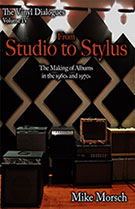 Buy Your Copy in the Biblio Bookstore Also available on  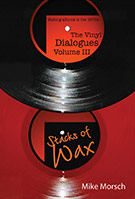 Buy Your Copy in the Biblio Bookstore Also available on  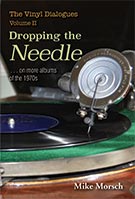 Buy Your Copy in the Biblio Bookstore Also available on  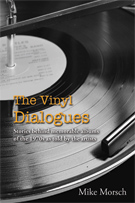 Buy Your Copy in the Biblio Bookstore Also available on  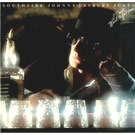 According to E Street Band and recent Rock & Roll Hall of Fame inductee Stevie Van Zandt in The Vinyl Dialogues, the album "I Don't Want to Go Home" by Southside Johnny and the Asbury Jukes was the beginning of what became known as the "Jersey Shore Sound." |
About The Vinyl DialoguesWhen I was a kid growing up in central Illinois, my folks had a record collection that consisted of popular music from the late 1950s to the mid-1960s. I played those vinyl albums — Elvis, The Beach Boys, The Beatles, The Association and many more — so much that I wore them out.By the time the 1970s rolled around and I was in high school, I was more into eight-track tapes, cassettes, big bushy sideburns, and bell-bottomed pants. ("Seventies suave" indeed.) And I still didn't have my own record collection. More than 35 years later I decided to change that. For Christmas 2013, my wife got me a turntable because I told her I was going to start a record collection. The premise was that I wanted to hear the early work of some of my favorite artists, and my thinking was that listening on vinyl would offer me the purest form of the music. I’d spend time researching a band and its music, choose an album I think I'd like to have in my collection, and go to the record store in search of the album. Fortunately, there are still a few record stores around my part of southeastern Pennsylvania, and there's a certain nostalgic charm about going into one and searching through the albums. The first album I coveted was “Abandoned Luncheonette” by Daryl Hall and John Oates. Because I didn’t grow up on the East Coast, I was unaware of the early Hall & Oates albums. So I had never really heard the entire album as a single body of work. I bought the album for $1 at a local record store and it was in fabulous shape. Naturally, I rushed home to play it on my new turntable and I was immediately transported back to the early 1970s in my mind. I was listening to the origins of what is now known as "Philly soul" or the "Sound of Philadelphia," and it was, and is, a really cool vibe. As I was examining the cover art, I flipped the record over and read the information on the back. There, at the bottom in small print, were the words, “1973 Atlantic Recording Corporation.” Hey, I thought to myself, 2013 is the 40th anniversary of the release of that album. I wonder if Daryl and John would want talk about it? I emailed Jonathan Wolfson, the manager for Hall and Oates, and he responded the same day saying he thought that a story about the 40th anniversary of the release of Abandoned Luncheonette was "a great idea" and that he would make Daryl and John available for interviews. Within a week I had both artists on the phone in separate interviews for a story that I was writing for my news organization at the time, Montgomery Media in Fort Washington, Pennsylvania. Both Daryl and John shared their recollections about making Abandoned Luncheonette and the story of how they got the now-famous photographs that grace the front and back covers of the album, those of a forgotten diner that once rested on the outskirts of Pottstown, Pennsylvania, just off Route 724, not far from where I live. The Hall and Oates interviews were so fun and informative that I began to wonder if others artists from the 1970s would talk about the experiences and recollections of making specific albums. They did. And that's how the idea for The Vinyl Dialogues was born. And the same approach has carried over into The Vinyl Dialogues Volume II: Dropping the Needle. Once I began interviewing the artists who made up the soundtrack of my life, it became something more than just chronicling the artists’ stories behind the music. It also became about my stories and their music. When I talked to Pat Simmons and Tom Johnston of the Doobie Brothers, I was transported back to my freshman year in high school when I’d plop a quarter into the jukebox and play “China Grove” virtually every day after lunch; when I talked to Dewey Bunnell of the band America, I was taken back to my sophomore year in high school when I witnessed by first bikini “wardrobe malfunction” at a local swimming pool while “Sister Golden Hair” played on the public address system; when I interviewed Danny Hutton and Chuck Negron of Three Dog Night, I was at my junior prom where Sue Brown and I shared a special kiss as “Just An Old-Fashioned Love Song” played right before I escorted her through the prom court introductions. I got to relive all of those moments as the artists described to me how the music and those albums were made. Hopefully these stories will do the same for you. These dialogues are filled with insight, sparkle and fond recollections right from the people who made the music. They also happen to be a whole lot of fun for those of us who are driven by great music. The stories behind the memorable albums in The Vinyl Dialogues and The Vinyl Dialogues Volume II: Dropping the Needle will surely resonate with many — from the artists crafted them to the listeners, like you and me, who still appreciate the music that filled up the soundtracks of our lives. Michael Morsch |
||
|
|
|||